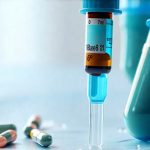Antibiotics are frequently prescribed to women for urinary tract infections (UTIs) – a common ailment affecting many throughout their lives. While incredibly effective at eliminating bacterial infections, the aftermath of antibiotic treatment can sometimes introduce unexpected discomforts. One such experience is increased bladder sensitivity, often described as a persistent urge to urinate, burning sensations even with normal urine volume, or general discomfort in the pelvic region. This isn’t necessarily a sign that the infection hasn’t been eradicated; rather, it reflects changes within the delicate ecosystem of the urinary tract and gut microbiome following antibiotic use. Understanding why this happens, how long it might last, and what steps can be taken to manage these symptoms is crucial for restoring comfort and well-being.
The gut-bladder connection is gaining increasing recognition in medical research. Antibiotics, while targeting harmful bacteria, unfortunately don’t discriminate – they also eliminate beneficial microbes within the gut microbiome. This disruption impacts overall health, but specifically affects the pathways influencing bladder function and sensitivity. A healthy gut contributes to a robust immune system, which plays a role in modulating inflammation and maintaining the integrity of the urinary tract lining. When this balance is disturbed, it can lead to heightened nerve signaling, causing increased perception of bladder fullness and discomfort. Furthermore, altered gut flora can affect neurotransmitter production, potentially influencing pain pathways and increasing sensitivity. This complex interplay explains why some women experience lingering bladder issues even after a UTI has been successfully treated. To help restore your system afterwards, consider how to balance flora.
The Microbiome & Bladder Sensitivity
The intricate relationship between the microbiome – the community of microorganisms living in our bodies – and bladder health is becoming increasingly understood. Antibiotics, by their very nature, are broad-spectrum agents designed to kill bacteria. This means they don’t just eliminate the pathogens causing a UTI; they also significantly reduce the populations of beneficial bacteria that reside in both the gut and, to a lesser extent, within the urinary tract itself. This disruption creates an imbalance known as dysbiosis. A healthy vaginal microbiome, rich in Lactobacilli species, is particularly important for preventing recurrent UTIs. Antibiotics can negatively impact this balance, making women more susceptible to future infections and potentially exacerbating bladder sensitivity.
Restoring a balanced microbiome after antibiotic use isn’t simply about repopulating with probiotics – although that’s often a helpful step. It requires creating an environment where beneficial bacteria can thrive. This involves not just probiotic supplementation but also dietary changes, stress management, and avoiding further disruption of the gut ecosystem (such as unnecessary antibiotic exposure). The impact on bladder sensitivity isn’t immediate; it develops over time as the microbiome shifts and the inflammatory response alters. This explains why symptoms may appear after completing a course of antibiotics, rather than during treatment itself. It’s important to stay hydrated even when experiencing these sensitivities.
The urinary tract is not sterile, as once believed. It contains a microbiome that interacts with the immune system. Antibiotic use can disrupt this microbial ecosystem, leading to changes in bacterial diversity and potentially increasing susceptibility to opportunistic pathogens or inflammatory responses. This alteration can contribute directly to increased bladder sensitivity and discomfort, even when cultures show no remaining infection. Recognizing this connection is vital for holistic management of post-antibiotic bladder issues.
Understanding the Neurological Component
Beyond the microbiome, neurological factors play a significant role in perceived bladder sensitivity. The bladder isn’t simply a storage sac; it’s innervated by numerous nerves that transmit signals to the brain regarding fullness and urgency. Antibiotics can indirectly affect these nerve pathways through several mechanisms. Chronic inflammation, even low-grade inflammation resulting from microbiome imbalances, can sensitize these nerves, leading to heightened perception of bladder sensations. This is known as central sensitization, where the nervous system essentially “learns” to perceive signals as more painful or urgent than they actually are.
Furthermore, stress and anxiety – often present during illness and antibiotic treatment – can exacerbate neurological sensitivity. The sympathetic nervous system, activated during times of stress, increases bladder activity and reduces bladder capacity. This creates a vicious cycle where anxiety leads to frequent urination, which further fuels anxiety and the sensation of urgency. Addressing these neurological components is therefore essential for effective symptom management. Techniques like mindfulness, pelvic floor muscle training (under guidance from a physical therapist), and cognitive behavioral therapy can help recalibrate nerve signaling and reduce perceived bladder sensitivity.
Pelvic floor dysfunction, often co-existing with or exacerbated by antibiotic-induced changes, also contributes to heightened sensitivity. Tight or dysfunctional pelvic floor muscles can compress the urethra and bladder, leading to urgency, frequency, and pain. A thorough assessment by a specialized physical therapist is crucial for identifying and addressing any underlying muscle imbalances.
Dietary & Lifestyle Considerations
Diet plays an immense role in both gut health and overall inflammation levels, directly impacting bladder sensitivity. A diet rich in processed foods, sugar, and caffeine can exacerbate inflammation and disrupt the microbiome, worsening symptoms. Conversely, a diet focused on whole, unprocessed foods – fruits, vegetables, lean proteins, and healthy fats – supports a healthier gut and reduces inflammatory responses. Specific dietary adjustments to consider include:
- Increasing fiber intake to promote a diverse gut microbiome
- Incorporating fermented foods (yogurt, kefir, sauerkraut) containing probiotics. Be mindful of sugar content in some yogurts.
- Reducing or eliminating caffeine and alcohol, which can irritate the bladder.
- Staying adequately hydrated – aim for 6-8 glasses of water per day, but avoid excessive fluid intake, which can worsen urgency.
- Identifying and avoiding food sensitivities that might contribute to inflammation.
Lifestyle factors also matter considerably. Chronic stress significantly impacts both gut health and neurological sensitivity. Incorporating stress-reducing practices like yoga, meditation, deep breathing exercises, or spending time in nature can be incredibly beneficial. Regular physical activity – moderate exercise is best – also supports a healthy microbiome and reduces stress levels. Finally, avoiding harsh soaps and fragrances in the genital area helps maintain a balanced vaginal microbiome and minimizes irritation. If you’re experiencing discomfort even after treatment, it may be helpful to ease stinging during urination.
Long-Term Management & When to Seek Help
The duration of bladder sensitivity after antibiotics varies considerably from woman to woman. For some, symptoms resolve within a few weeks as the microbiome begins to recover. Others may experience lingering discomfort for months or even longer. Patience is key, and avoiding unnecessary interventions can allow the body to naturally heal. However, it’s crucial to distinguish between normal post-antibiotic sensitivity and persistent problems that require medical attention.
Seek professional help if you experience:
1. Fever or chills
2. Blood in your urine
3. Severe pain that doesn’t improve with self-care measures
4. Recurring UTI symptoms despite completing antibiotic treatment
5. Significant impact on quality of life due to bladder sensitivity
A healthcare provider can rule out other potential causes, such as interstitial cystitis (painful bladder syndrome) or ongoing infection. They may recommend further testing, including urine cultures and cystoscopy (a procedure to examine the inside of the bladder). Treatment options might include pelvic floor physical therapy, medications to manage urgency and frequency, or referral to a specialist in urogynecology. Remember that managing post-antibiotic bladder sensitivity is often a collaborative effort involving lifestyle modifications, dietary changes, stress management techniques, and potentially medical interventions tailored to your individual needs. Proactive communication with your healthcare provider is essential for achieving optimal outcomes and restoring comfort and well-being. If you’ve had recurring issues, understanding bladder discomfort could also be beneficial.





















